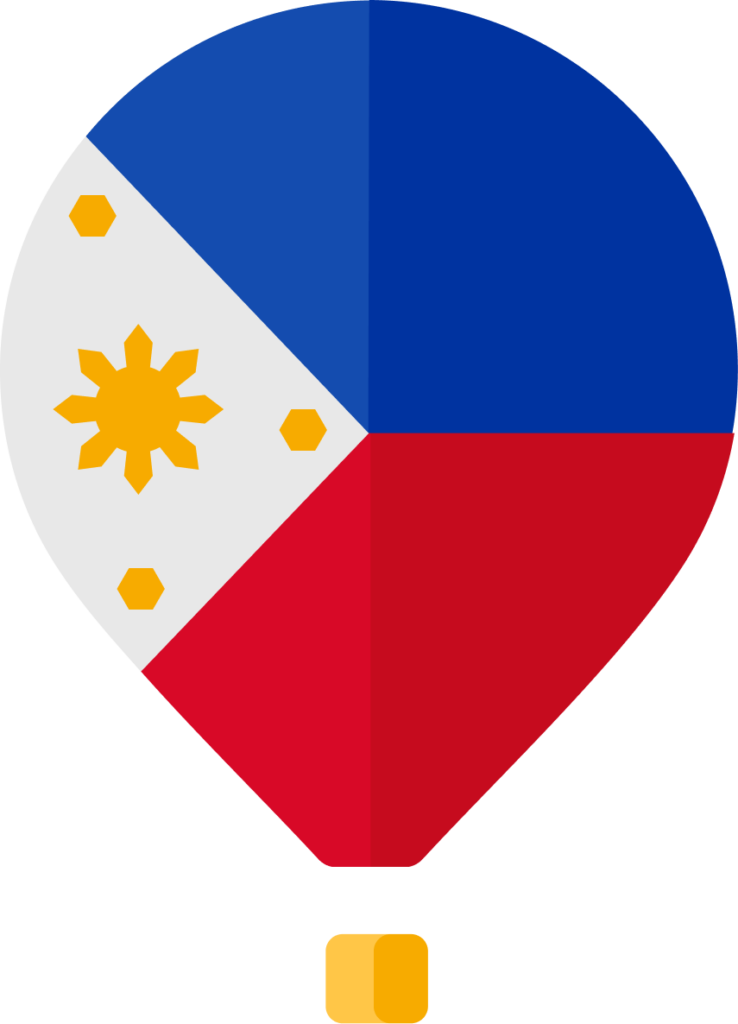Children’s Games in Philippines
Patintero: This game takes three to five children per team. Draw a rectangle on concrete with chalk, five to six meters with equal sections. Create as many teams as you’d like. Half of the children guard the area, while the other half tries to pass through without getting tagged. The team guarding must not step out of line, or they lose.
Agawan Base: Two teams are formed, and there can be any amount of children on each team. Draw a line or create a line down the center of the field. Use any item or thing for a base marker on each opposing side. The children chase and tag any child on the other team who tries to get to their base.
TumbangPreso: One child is the prisoner (preso) or protector of a can. The prisoner stops all of the other children from knocking the can over. When the can is knocked over, the player must remove the slipper that did it (two slippers per player, one is removed). This goes on until all of the slippers have been taken from the children. At that point, the prisoner chases the other players until he or she tags anther child to be the next prisoner.
Filipino Cuisine
Influenced by Malay, Spanish, and Chinese cultures, Filipino cuisine is a melting pot of delicious delectable that even we in the United States can agree is a treat. Jackfruit (langka), coconut (buko), and palm nuts (kaong) are just a few must haves in Filipino cuisine. Rice and Cassava are popular sides, while some type of beef is typically a main dish because pork is considered taboo.
Filipino Desserts
1.) Riceballs with Coconut Milk
- Ingredients: 1 cup of rice flour, 1 cup sugar, 3 cups coconut milk, 2 cups large pearl taioca, 1 ½ cups coconut cream, strips langka
- Directions: 1. Blend the flour and water into dough, shape into small balls
2. In a pot, bring coconut milk to a boil. Stir in sugar and
Tapioca. Add rice balls.
3. Boil for 5 minutes, serve hot
2.) PichiPichi (steamed cassava cake)
- Ingredients: 1 ½ cups grated cassava, food coloring, 1 cup sugar, 1 bundle pandon leaves, ½ tsp lye water, grated coconut
- Directions: 1. Mix the sugar and pandon into water, until sugar is dissolved
2. Mix cassava, add lye water drop
3. Pour into bamboo steamer, mix until translucent
4. Scoop out cooled mixture, roll into grated coconut
3.) Puto Maya
- Ingredients: 2 cups sweet rice (malagkit), 1 ½ cup grated fresh coconut, 1 ¼ cup of white sugar, 2 ¼ cups of water, 2 tbsp of butter
- Directions: 1. Wash and rinse sweet rice at least two times
2. Add water, bring to a boil. When water has evaporated, lower
Heat
3. Cook for 5-10 minutes. Let it cool.
4. Mix ¾ cup of sugar and butter in, shape mixture into small balls
Around 1 ½ inches in diameter.
5. Roll balls into grated coconut
Simple Recipes of the Philippines
- Balbacua
- Ingredients: 1.5 kg balbacua set (paa, balat, mukha, buntot), 1 sacket Del Monte tomato paste, 1 tbsp peanut butter, 2 tbsptausi, 2 pcs silingespada
- Directions: – Simmer meat in 6 cups water until tender (1 hr, 15 min). Drain
And keep stock.
-Sautee Del Monte sandosenangsarap all in one seasoning, Del Monte
Tomato paste and peanut butter in tbsp oil. Add stock and 1/3 cup of
Water. Bring to a boil.
-Add cooked meat, tausi and sili. Season with 1 tsp salt. Simmer for
15 mins, serve.
- Pachero
- Ingredients: 350g beef round, 120g chopped potatoes, 2 pcs medium semi
Ripe saba (plaintain), 1 pc chonzodebilbao, ¼ cup cooked garbanzos,
2 heads cabbage, 1 pouch Del Monte pochero
- Directions: – boil beef in 4 cups of water until tender, retain ¾ broth. Add
Potatoes, saba, chorizo, garbanzos, and salt. Simmer until tender.
– Add Del Monte sauce. Simmer for 5 minutes. Add peechay. Simmer. Serve.
- Pina-Beef Steak
- Ingredients: 1/4 kg beef sirloin (sliced), 1 pc large onion (sliced), 1 ½
To 2 tbsp soy sauce, 1 tbspcalamansi juice, pineapple tidbits drained
- Directions: – Marinate beef for 1 hour. Drain and reserve marinade. Fry in
¼ cuo of oil until brown. Keep oil in pan, set meat aside.
– Sautee onion. Add soy sauce, 1/8 tsp pepper, calamansi
Juice and marinade. Simmer, add beef and pineapple.
Simmer. Serve.
Children’s Day
Annually August 29th, children put on shows, city wide parades and festivals, adults dress up to entertain the children; a holiday specifically for children is held in high regard to show appreciation for the innocence of the youth in the Philippines.
Filipino Festivals and Holidays
Ati-Atihan: A celebration in honor of the St. Nino. Citizens wear costumes, paint themselves, and dance around the city specifically to the song “HalaBira!” This is one of the most popular celebrations held from January 16 to January 22 annually.
Fecist of Our Lady of Candles: Widely celebrated, Filipinos gather on February 2 annually for a pageant celebrating the Nuestra Senora de Candelana and the fiesta queen.
New Year’s: Like the United States, the New Year celebrations host many gatherings and ritual traditions for every Filipino family. Special food is prepared and this time is known as Filipinos noisiest time of the year. There are fireworks, and doors are left wide open to bring in the new year with open arms.
Filipino Clothing
The younger generation of Filipinos prefers to wear the westernized style of clothing. The older generation still prefers the traditional attire the ‘baro’tsaya’ is a colorful gown, a national dress for the women of the Philippines. Today it is a Filipino blouse and skirt, covering their entire upper body as to not offend any married couples. Men traditionally wear a barong tagalog. It is an embroidered top, worn untucked, with collars and long sleeves.
Filipino Customs
- Mano Po: to show respect, towards elders, the younger family member takes the elders hand and places the back of it on their forehead.
- Remove Your Shoes: removing the shoes is a sign of cleanliness and respect
- Hello/Goodbye: make eye contact, raise eyebrows, acknowledge every ones presence individually, whether saying hello or goodbye.
Music: Genres and Instruments
Played with traditional instruments like; the zither with bamboo strings, tubular bamboo resonators, wooden luters, and other stringed instruments, Filipino music is rich in sound and culture. There are many different genres of music depending on the region. Gangsa is played by indigenous peoples in the Philippines, while Gang Chime is played in the southern islands of the Philippines. Folk music is the traditional genre, but there still is the modern pop music, as well as rock and blues.
Places to See! Things to do!
- Hundreds Islands National Park: Yielding several individual islands, Hundred Islands Park is home to Children’s Island. It is the perfect island for kids. It surrounded by beautiful scenery and shallow water, it is the safest island to allow your kids enjoy.
- Enchanted Kingdom: A theme park that opened in 1995 is called Manilas Enchanted Kingdom. There are sections like “The Jungle Outpost” and “Spaceport.” There are rides, water rafting, theatres in 3D and so much more.
- Ayala Museum: Want your kids to learn? This museum exhibits contemporary art and history, plus, a lot of the history is handcrafted from centuries ago. It is the perfect educational yet fun experience.
Fun Facts
- Adult literacy is 95% in the country, as education is highly valued
- 85% of the total population is Roman Catholic
- They drive on the right side of the car
- Most people cook on an open fire, so it always smells like smoke
- 80 million people live in the Philippines
- Tagalog is the national language

Online Tagalog lessons for kids: dinolingo.com
